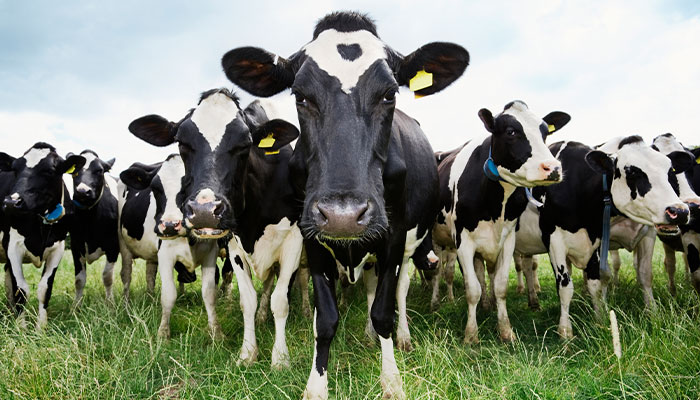The effects of the COVID-19 pandemic have rippled though every aspect of our lives over the past two and a half years, resulting in terrible loss, hardship and ongoing trauma. At least 575 million people worldwide have contracted the virus, and at least 6.4 million have died.

New normal: Australia has lived through at least 22 pandemics, COVID-19 being the latest – and not the last.
Some people talk about “when all this is over” and “when we get back to normal”, while others are resigned to a new normal, a lower benchmark where we accept the limitations of COVID on our lives.
But pandemics are nothing new.
Even Australia, with its relatively short history of being connected to the rest of the world and its myriad diseases, has lived through at least 22 pandemics and more than 30 major epidemics since the early days of European settlement.
Often, these diseases have been found in their animal hosts for centuries without humans ever coming into contact with them.
The deadly Spanish flu pandemic after World War I is well known, but there have been many others that have been forgotten. Poliomyelitis, the disease that caused paralysis in children, and HIV‑AIDS, both of which had devastating effects, are classified as pandemics and are both within living memory.
Before them came a Dengue fever pandemic in 1925-26, a bubonic plague pandemic in 1900-23 and a smallpox pandemic in 1881-82.
In the 1960s, the prevalence of antibiotics, antivirals and vaccines led many in the medical community to believe the world was well on the way to conquering infectious disease, and by 1980, there was a widespread belief that the war was won.
Smallpox, which had killed between 300 million and 500 million people in the 20th century alone, was declared eradicated.
They didn’t take into account the rash of ‘new’ diseases that appeared from the 1950s on.
The march of the new diseases
COVID-19, monkeypox, HIV-AIDS, mad cow disease, Ebola, Marburg virus, Legionnaires disease, bird flu, swine flu, SARS, toxic shock syndrome, Lyme disease and West Nile virus all have one thing in common: they all infected humans for the first time in the past 70 years.

Nature's forces: The process of viruses slipping from animals to humans and causing serious illness such as mad cow disease continues until this day.
Many also have another commonality: they are zoonotic diseases, originating in animals.
Often, these diseases have been found in their animal hosts for centuries without humans ever coming into contact with them until the natural host’s environment is disturbed in some way.
The bubonic plague is a classic example. Also known as the Black Death, it is responsible for several huge pandemics, including one that killed up to a third of Europe’s population in the 1300s. It has never been fully eradicated, instead retreating to its animal carriers between human outbreaks. It remains endemic in wild populations of small, ground-dwelling animals in a number of states in the US, and about 2000 human cases are recorded every year.
Our continuing interference with the natural world ... can aid and encourage infections to emerge and mutate.
COVID-19, monkeypox, bird flu and swine flu all show us that this process of viruses slipping from animals to humans continues today.
The natural environment remains a powerful, ever-changing force, and one that we underestimate to our peril.
We continue to believe that we are the dominant species on the planet, and that we can continue to place our confidence in antibiotics and antivirals when confronted by disease.
However, we are just one of many competing species, and our belief is seriously misplaced.
- No hologram doctors anytime soon: the future of AI in healthcare
- Protein could provide answers to the cause of dementia
The emergence and persistence of infectious disease over the past 200 years underscores the reality that mutation and change are facts of life. We may change, but so does the environment around us, including the microbial world, and often at a faster pace.
Our continuing interference with the natural world through deforestation, road construction, dam building, mining and residential expansion can aid and encourage infections to emerge and mutate. It brings us into contact with new species and gives them no choice but to try to adapt if they are to survive.
Climate change is forcing species to migrate as their usual habitats become uninhabitable due to extreme heat and flooding.
How to stop the same old errors
Our love of novelty is also a weak point. We yearn to visit places no-one else has ever been; we take home souvenirs of our travels and bring exotic pets into our homes.

Small world: With the rapid movement of humans across the globe, national borders are effectively meaningless as a protection against the spread of disease.
We are also more mobile than at any time before in our history, meaning that instead of spending six weeks on a boat, a traveller could be in a remote region of Africa in the morning and on a flight home to Europe or the US by evening. By the time we start to feel unwell, we can be halfway around the world and have been in contact with hundreds of people. With this rapid movement, national borders are now effectively meaningless as a protection against the spread of infectious disease.
With all of this in mind, COVID-19 is unlikely to be the last ‘new’ disease to cross from animals to humans, and it is also unlikely that it will be the last pandemic we see. Old diseases we thought we had beaten, like diphtheria, are emerging again due to a drop-off in vaccination.
Medical science may have advanced in leaps and bounds, but governments around the world have repeated the same errors in this pandemic as their predecessors made during outbreaks in the 19th and 20th centuries. The key failing has been in not understanding how the average person responds to the risk of infection, and how to motivate people to follow public health messaging.
If we are to weather future pandemics and large epidemics, we must better understand what motivates people to take action to protect themselves and others. We may not be able to avoid new diseases taking hold, or the resurgence of old ones, but we can be better prepared to cope with their consequences.
Peter Curson is Emeritus Professor of Population and Health in the Department of Health Sciences at Macquarie University



